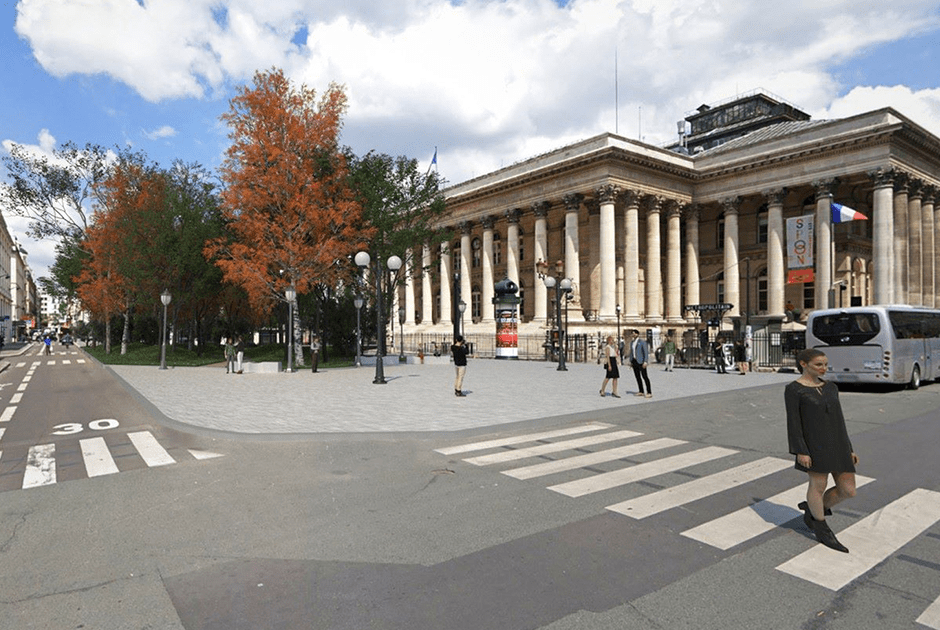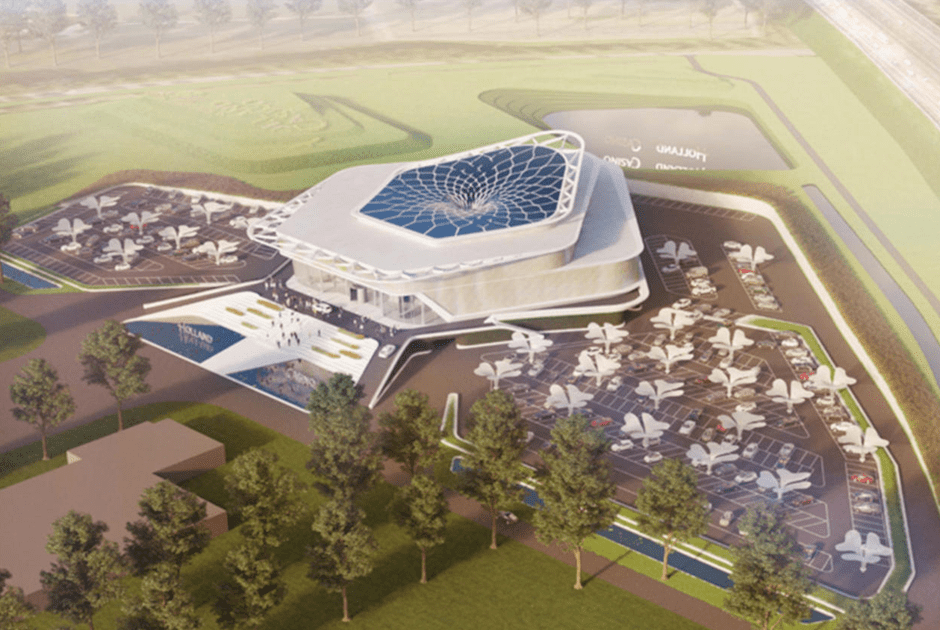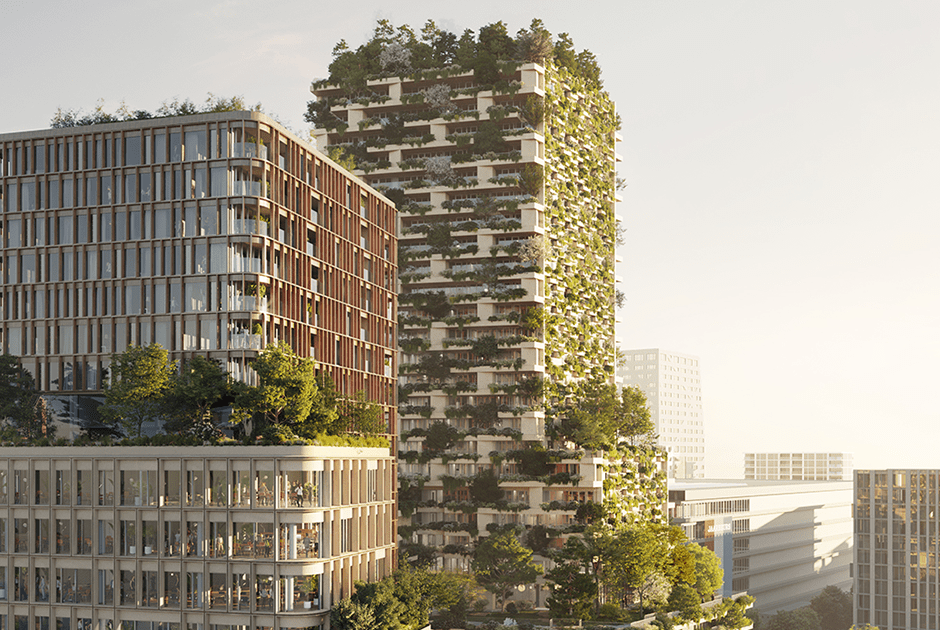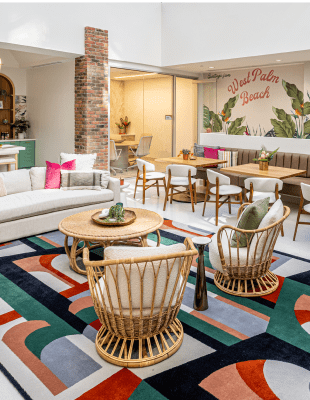Summers in cities are getting hotter. Heatwaves are becoming more frequent and severe, impacting the environment and human life, pushing natural and man-made systems beyond their ability to adapt. To protect our ecosystems and communities, we need to think about holistic solutions that tackle urban heat stress, making sure no one is left behind. But where do we start?
We don’t have to look very far to see the impact of climate change. In the Netherlands where I live, we experienced a sweltering heatwave this summer. Highest temperatures were recorded in the city of Maastricht at 39.5°C. The UK too saw a record-breaking heatwave with temperatures over 40°C, with nationwide advisories issued to citizens on how to face the high temperature. Delhi hit even higher temperatures, recording 49°C in May; and several US regions – most recently, California – declared ‘heat emergencies’ urging people to stay indoors, or opening community centers for citizens looking to cool off.
Feeling the heat
Though cities today account for less than 2 percent of the Earth’s surface, they produce more than 68 percent of greenhouse gas emissions globally, all of which contribute to pushing up temperatures. With an additional 2.5 billion people projected to reside in urban areas by 2050, greenhouse gas emissions will only increase – and temperatures will keep rising - if nothing changes.
Cities are also tremendous absorbers and retainers of heat. The ‘urban heat island effect’, caused by human activity and design of our public spaces, is set to become more pronounced than ever. And our cities today are just not designed to cope with this rising heat.
So, what can we do to ensure that cities continue adapting to protect the over two billion people – about a quarter of the world’s population1 – that are estimated to be at risk of urban heat exposure? The answer lies in finding innovative, sustainable and inclusive zero-carbon solutions to tackle rising urban heat stress. But this will only be possible if we work collectively to come up with some creative and adaptive plans – both in the short and long term. We have some solutions...
Leadership and community engagement for better preparedness today
Extreme heat exposure is highly unequal and severely impacts the urban elderly, those with underlying health conditions, and marginalized communities. To truly make sure no one’s left behind, local authorities and communities need to work together for solutions that benefit all.
We can start the fightback with swift action at a grassroots level, creating supportive environments through activities like buddy systems to check up on elderly and those suffering from chronic diseases, distribution of water bottles, and community events in cooler public spaces that can provide respite particularly for families and those experiencing loneliness. This needs to go hand-in-hand and be supported by municipal programs that put ‘heat stress’ at the top of the city’s agenda. Clear leadership roles are critical at this level to provide the necessary support and elevate outreach activities. Many US cities recognize this and have hired chief heat officers to help urgently navigate the response to longer stretches of excessive heat, that have become more common over the years.

Nina van Haren, from the Municipality of The Hague (Gemeente Den Haag), reflects on where the focus in developing these plans lies, “The Netherlands, particularly specific densely populated areas in The Hague, has experienced increasingly hot summers the last few years. In the past, we did not focus as much on the topic of heat in the social domain. But the impact of rising temperatures on our communities, particularly the most vulnerable, has been worrying. While adaptive, infrastructure-based solutions can certainly provide an answer, these typically take years to plan out. We recognized that action is needed today, and set out to look for concrete solutions that provide tangible and equitable benefits for those most affected. And, in the short term, we also need to focus on informing and changing behaviors around how people act during heatwaves. Our goal was to develop a local heatwave plan that supported the whole community, particularly the elderly, homeless and people with chronic health conditions.”
Arcadis consulted with the city on its local heat plan development and communication strategy.

The insights gathered from the community also led to the development of a pro-active plan to help the community cope in the short-term, like sharing water bottles and identifying public spaces that can be used as respite from extreme heat.
“Projects that address heat stress often have the potential to inject new life into an area, so, as designers, architects and urban planners, we owe it to residents to make them part of that process and tailor it to their needs. The outcomes are better for everyone,” points out Adrian Moredia Valek, a consultant at Arcadis researching heat stress solutions and Research Fellow with the Solutions for the Outdoor Climate (SOLOCLIM) programme.
Innovative solutions for informed investments
Much of what policy makers and governments can bring into practical application depends heavily on funding and budgets. When planning for redevelopment, not only do we need to consider flood resilience, energy efficiency and the circular economy, but also; will this development be heat proof? This brings the additional challenge: can heatwaves be predicted in a way that supports the necessary additional investment?
This is where digital tools play a major role. If we can leverage technology both to understand how communities are impacted by heat stress, and bring local communities into the problem-solving process, the benefits can be huge. One such product, which we developed through a global partnership with Irys, is a community engagement app that makes community consultation easy, inclusive and accessible. It enables project owners to engage in a two-way dialogue with the community, offering citizens or stakeholders a quick and convenient way to provide input and feedback.
Equally, in the early stages of planning, digital tools can be invaluable when it comes to understanding the physical make-up of an area, giving unbiased insight into geographical disparities which may be heightening problems, and which need to be addressed at a city-level.
For example, using Tygron - a mapping software that paints an intricate data-filled ‘digital twin’ of a city - our teams can ‘zoom in’ and pinpoint districts, neighborhoods and streets where certain problems, such as the impact of extreme high temperatures, are heightened. And further, focus on these corridors for data-driven spatial design solutions that can alleviate heat stress in the neighborhood, positively impacting those areas, infrastructure and residents in need of the most attention.

Sustainable, carbon-zero solutions to tackle urban heat stress
Cities are getting increasingly congested, and with limited space and escalating challenges, we need to design public spaces that serve multiple purposes. Everything we build needs to be future proof: providing flood protection but also acting as a heat refuge or cooling device during extreme heatwaves, generating energy while also creating attractive spaces for the community to stroll and enjoy.
There’s a lot to be done, but we have clear long-term solutions which – thanks to the help of data and insights - are both robust as well as adaptive to the evolving climate, environmental factors and needs of society.
Some examples include:
1. Revamping public spaces with innovative, hybrid, nature-based solutions: When used creatively and backed by data, these can provide natural cooling solutions while also improving quality of life for the community. Water features, for example, can provide a cooling effect, whereby hot air evaporates the water, and this in turn cools the surrounding air.


On the same lines, the City of Rotterdam is looking at transforming Hofplein, a busy traffic junction, into a green oasis. Using the Tygron software, Arcadis was able to analyze optimal zones to increase greenery, trees, water features, and create natural air corridors, which would help provide relief on a hot summer day. “The optimal solution, once fully implemented by 2030, could lead to an average maximum temperature decrease of 7°C, significantly reducing heat stress experienced by the neighborhood.” adds Bas.
Arcadis is also working with the city of Paris to transform 100 hectares of asphalt, planting 170,000 new trees by 2026. Our team is conducting a feasibility study, environmental analysis and digital mock-ups for three of the five sites selected, demonstrating the impact of ‘greening’ the city’s public spaces in terms of carbon footprint and limiting heat. This project not only will help ‘cool’ the city, but also transform the city’s appearance, help reduce air pollution and overall, create a more enjoyable place for Parisians.

2. Redesigning building facades with green solutions in mind: We can't look at hybrid, nature-based solutions, and ignore buildings, one of the most important components of a city. These go hand-in-hand in addressing heat stress. During heatwaves, buildings can discharge up to 20 percent more heat2. Here are some carbon zero solutions that can help cool down buildings when temperatures climb.
- Night cooling using natural ventilation to purge excess heat and cool the building. Buildings with sufficient thermal mass exposed to nighttime ventilation can reduce peak daytime temperatures by up to 3°C. Our approach for Holland Casino Venlo is a great illustration of this – the design includes a passive bio-based façade and roof, photovoltaic foils, and a hybrid ventilation system featuring flower-shaped sculptures that can help catch wind and provide ventilation for the building.

- Green and reflective roofs and facades: Green roofs and facades can lower building temperatures up to 4°C. They also contribute to a reduction in building energy use by 0.7% compared to conventional roofs. And, when placed extensively throughout cities and in combination with greener public spaces, can moderate the heat island effect and reduce city- wide ambient temperatures. Wonderwoods – a residential development partially designed by Arcadis in Utrecht is one such example. Designed to look like a 'vertical forest', with balconies and facades planted with local tree species and shrubs, it is helping to absorb over 5000kg of CO2 from the city’s air every year.

3. Rethinking our infrastructure and materials: This July, we saw London’s Luton Airport halt flights due to surface defects caused by the heatwave. And in the Netherlands, asphalt streets sizzled to temperatures of 52°C. Much of our infrastructure is made of heat absorbing materials which can exacerbate heat experienced in cities.
Ramin Massoumi, Arcadis’ Global Solution Director for Connected Highways, points out that this can also make infrastructure costly and difficult to maintain. “Climate change impacts can pose a high bill on our transport infrastructure if not proactively managed and maintained. Solutions the day after are expensive – leading to shutdowns and disruption, impacting commute times, and in extreme cases, costly replacements that can take months or even years to implement.”

In Australia, Arcadis is working on modelling the ‘albedo effect’ of pavements – essentially, their ability to reflect light, which can further intensify the heat island effect. Using this data, our team is able to get a ‘fuller’ picture of the impact of the cost, longevity and break points of urban assets such as road infrastructure. And, this is factored into earlier on into our design decision-making process and designs through a ‘Nutritional Label’ where we replace traditional ‘nutritional’ indicators with sustainability indicators such as carbon, albedo and lifecycle cost.

Joined up thinking
Increased heatwaves and the damage they do could be reason enough to convince humankind to cut emissions and slow climate change. In the meantime, there’s lots we can do - both to bring down the temperature in our streets when a heatwave hits and change the way we build and rethink our cities to reduce the urban heat island effect.

Heat strategies and greater predictability to mitigate the effect of climate change on our cities, but more importantly, citizens, are the need of the hour. While it’s a big task at hand, it doesn’t have to be intimidating. Together with clients, we’ve had demonstrable success across the globe. But cities around the world are all at different stages of setting up these frameworks and goals to address urban heat stress. The important question today is: what can they learn from one another, and how can they collaborate across borders to find the most effective, integrated solutions? The key, going forward, is in strong leadership and ownership to open the dialogue, thinking more holistically and across-borders about nature-based and equitable solutions, and movement at all levels towards action now.







